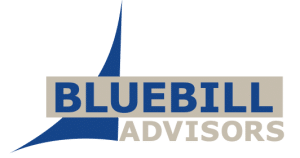Perhaps it is the season when everything seems especially fecund, or perhaps I can’t resist abusing the lyrics of late, great Robbie Burns, but there is no “perhaps” about electronic book publishing’s astonishing pace of growth.
The Gilbane Group (a division of Outsell, Inc.), together with research partner BISG, is reaching out to the communities of book publishing professionals. We invite you to participate in Web-based survey, a central research mechanism for our upcoming study A Blueprint for Book Publishing Transformation: Seven Essential Processes to Re-Invent Publishing. The study will be published in June 2010, and all participants in this survey will have full access to the full-length study through The Gilbane Group website.
At the just concluded 2010 BEA—Book Expo America—our research partner on our upcoming study, A Blueprint for Book Publishing Transformation: Seven Essential Processes to Re-Invent Publishing, delivered some facts and figures in a session there. Kelly Gallagher, VP of Publishing Services at RR Bowker and BISG Reasearch Committee Chair, presented new research from The Book Industry Study Group on consumer attitudes toward eBook reading. According to the research, eBook sales went from 1.5% of all book sales in Q1 2009 to 5% in Q1 2010, with 33% of eBook buyers entering the market in the last six months. The survey was of eBook reading and purchase behavior from print book readers who recently purchased either an eBook reader or an eBook.
Outsell, Inc., our parent company, has also just published news about ebook market growth in education publishing. From the press release: “Outsell estimates the total global market for K-12 and post-secondary textbooks was $15.2 billion in 2009 and will reach $16.6 billion by 2012, representing a modest [compound annual growth rate] CAGR of 2.6 percent. Digital textbook products will fuel the market growth, with a CAGR of 25 percent, while revenues from print textbooks will decline by 1 percent.”
The Outsell report provides case studies of eight publishers’ innovations, including Pearson, Elsevier, Cambridge University Press, Macmillan, Flat World Knowledge, Cengage Learning, Chegg, and CourseSmart. It also provides potential market scenarios over the next 10 years and their likelihood of occurring, and strategies for publishers to “reclaim” revenues lost during a print-only era. To purchase the report, please visit Outsell, Inc. or click here.
Speaking in links, a reminder to all that we’re in the middle of collecting data from our ongoing survey of book publishing professionals, so if you’re one and you haven’t taken the 10-minutes to complete the Blueprint survey, click here. We seek to gain a clearer picture of ebook and related digital publishing efforts underway among the full spectrum of book publishers. Furthermore, the analyst team at The Gilbane Group seeks to identify a number of “pain points” or barriers encountered by book publishers when it comes to their developing or expanding digital publishing programs, including areas such as royalties, digital format choices, digital print decisions, and distribution problems.
So, it is Spring! Take a survey!

